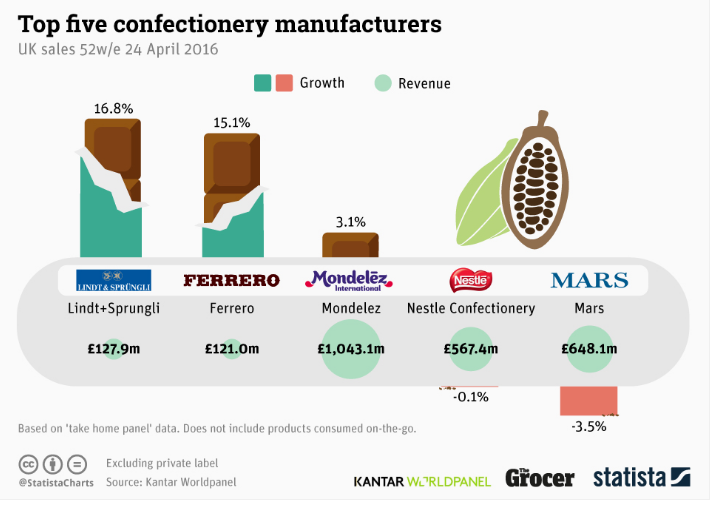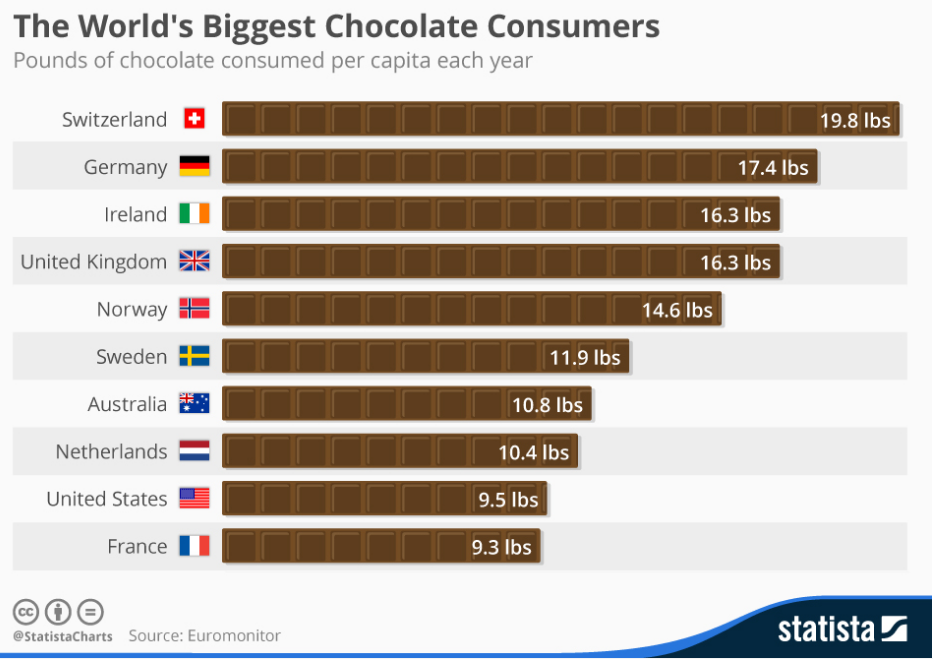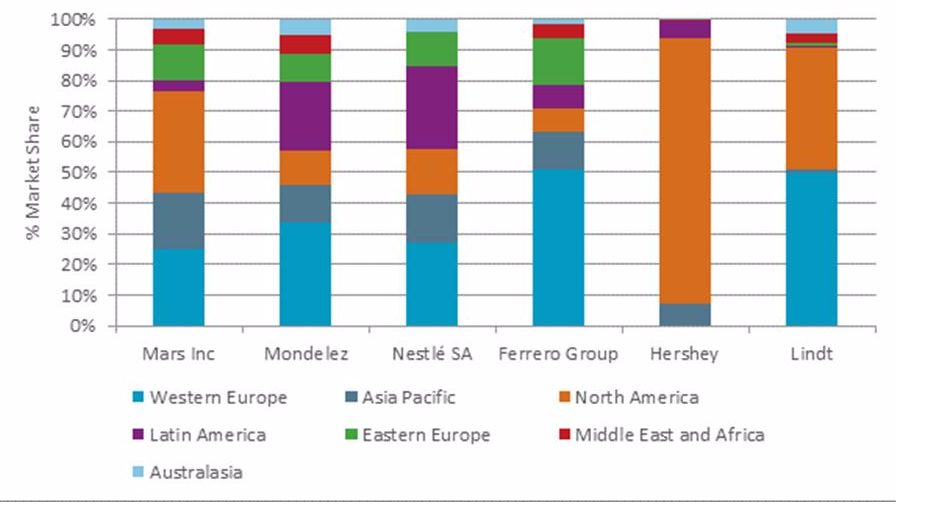Industry Trends: European Confectionery 12/23/2016
Fast Facts
- European were exported to more than 180 destinations worldwide
- There are 12,700 confectionery companies in Europe with more than 330,000 related jobs
- 50% of the world’s cocoa production comes from Europe
- The European chocolate, biscuits & confectionery industry manufactured 11.5 million tons of products in 2013 *Caobisco 2013
- Chocolate candies account for about 60% of US confectionery sales, non-chocolate candy for about 30%, and gum for about 10%.
- The confectionery industry directly employs over 55,000
- The confectionery industry has an economic impact of $35B *National Confectioners Association.
- Revenues in candy are typically higher in the second half of the year due to holiday sales. *Hoovers 2016
Industry Breakdown
***See Figure A and B for a look at the top 5 confectionery manufacturers growth and revenue along with the countries that are the world's top chocolate consumers.
The candy manufacturing industry includes three major segments: companies that make chocolate from beans, companies that use purchased chocolate to make candies, and companies that make non-chocolate candy. *Hoovers 2016
Confectionery Growth in European Countries in 2015
Growth in Asia Pacific
***See Figure D to view the manufacturers that have the most marketshare by country.
Industry Trends & Opportunities
Dark Chocolate — Eating dark chocolate may offer health benefits, such as stress relief and improved blood circulation. Researchers have also found evidence that eating dark chocolate may be beneficial for liver disease patients.
Industry Challenges
Health and Wellness Trend – The overall trend of increasing obesity and diabetes will put pressure on sugar consumption. A survey of UK National Diet and Nutrition found that confectionery was the #2 source of sugar for children and teends (behind soft drinks). As a result, the European market is at risk to decline as regulators and consumers consider impact upon public health. There has even been a push to remove confectionery items from supermarket check-out lines. *Confectionerynews.com
Recently, the World Health Organization recommend that added sugars not exceed 10 percent of total energy. In order to assist with this goal, the FDA has proposed added sugars to be listed separately from total sugars on the Nutrition Facts Panel with a 10 percent Daily Value. *NCA 2016





